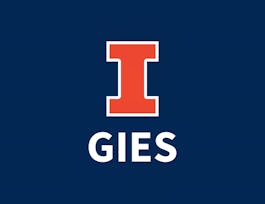Welcome to Data Analytics Foundations for Accountancy II! I'm excited to have you in the class and look forward to your contributions to the learning community.



Data Analytics Foundations for Accountancy II

Instructor: Robert J. Brunner
Sponsored by Coursera for Reliance Family
3,732 already enrolled
(11 reviews)
Skills you'll gain
- Scikit Learn (Machine Learning Library)
- Data Analysis
- Advanced Analytics
- Machine Learning Methods
- Applied Machine Learning
- Predictive Analytics
- Machine Learning Algorithms
- Analytics
- Predictive Modeling
- Machine Learning
- Machine Learning Software
- Feature Engineering
- Exploratory Data Analysis
- Anomaly Detection
- Business Analytics
- Unsupervised Learning
- Dimensionality Reduction
- Supervised Learning
- Statistical Machine Learning
- MLOps (Machine Learning Operations)
Details to know

Add to your LinkedIn profile
9 assignments
See how employees at top companies are mastering in-demand skills


Earn a career certificate
Add this credential to your LinkedIn profile, resume, or CV
Share it on social media and in your performance review

There are 9 modules in this course
You will become familiar with the course, your classmates, and our learning environment. The orientation will also help you obtain the technical skills required for the course.
What's included
3 videos5 readings1 assignment1 discussion prompt
This module provides the basis for the rest of the course by introducing the basic concepts behind machine learning, and, specifically, how to perform machine learning by using Python and the scikit learn machine learning module. First, you will learn how machine learning and artificial intelligence are disrupting businesses. Next, you will learn about the basic types of machine learning and how to leverage these algorithms in a Python script. Third, you will learn how linear regression can be considered a machine learning problem with parameters that must be determined computationally by minimizing a cost function. Finally, you will learn about neighbor-based algorithms, including the k-nearest neighbor algorithm, which can be used for both classification and regression tasks.
What's included
4 videos3 readings1 assignment1 programming assignment4 ungraded labs
This module introduces several of the most important machine learning algorithms: logistic regression, decision trees, and support vector machine. Of these three algorithms, the first, logistic regression, is a classification algorithm (despite its name). The other two, however, can be used for either classification or regression tasks. Thus, this module will dive deeper into the concept of machine classification, where algorithms learn from existing, labeled data to classify new, unseen data into specific categories; and, the concept of machine regression, where algorithms learn a model from data to make predictions for new, unseen data. While these algorithms all differ in their mathematical underpinnings, they are often used for classifying numerical, text, and image data or performing regression in a variety of domains. This module will also review different techniques for quantifying the performance of a classification and regression algorithms and how to deal with imbalanced training data.
What's included
5 videos4 readings1 assignment1 programming assignment4 ungraded labs
This module introduces several important and practical concepts in machine learning. First, you will learn about the challenges inherent in applying data analytics (and machine learning in particular) to real world data sets. This also introduces several methodologies that you may encounter in the future that dictate how to approach, tackle, and deploy data analytic solutions. Next, you will learn about a powerful technique to combine the predictions from many weak learners to make a better prediction via a process known as ensemble learning. Specifically, this module will introduce two of the most popular ensemble learning techniques: bagging and boosting and demonstrate how to employ them in a Python data analytics script. Finally, the concept of a machine learning pipeline is introduced, which encapsulates the process of creating, deploying, and reusing machine learning models.
What's included
5 videos3 readings1 assignment1 programming assignment4 ungraded labs
This module introduces the concept of regularization, problems it can cause in machine learning analyses, and techniques to overcome it. First, the basic concept of overfitting is presented along with ways to identify its occurrence. Next, the technique of cross-validation is introduced, which can mitigate the likelihood that overfitting can occur. Next, the use of cross-validation to identify the optimal parameters for a machine learning algorithm trained on a given data set is presented. Finally, the concept of regularization, where an additional penalty term is applied when determining the best machine learning model parameters, is introduced and demonstrated for different regression and classification algorithms.
What's included
5 videos4 readings1 assignment1 programming assignment4 ungraded labs
This module starts by discussing practical machine learning workflows that are deployed in production environments, which emphasizes the big picture view of machine learning. Next this module introduces two additional fundamental algorithms: naive Bayes and Gaussian Processes. These algorithms both have foundations in probability theory but operate under very different assumptions. Naive Bayes is generally used for classification tasks, while Gaussian Processes are generally used for regression tasks. This module also discusses practical issues in constructing machine learning workflows.
What's included
4 videos4 readings1 assignment1 programming assignment3 ungraded labs
This module introduces an important concept in machine learning, the selection of the actual features that will be used by a machine learning algorithm. Along with data cleaning, this step in the data analytics process is extremely important, yet it is often overlooked as a method for improving the overall performance of an analysis. This module beings with a discussion of ethics in machine learning, in large part because the selection of features can have (sometimes) non-obvious impacts on the final performance of an algorithm. This can be important when machine learning is applied to data in a regulated industry or when the improper application of an algorithm might lead to discrimination. The rest of this module introduces different techniques for either selecting the best features in a data set, or the construction of new features from the existing set of features.
What's included
5 videos4 readings1 assignment1 programming assignment4 ungraded labs
This module introduces clustering, where data points are assigned to larger groups of points based on some specific property, such as spatial distance or the local density of points. While humans often find clusters visually with ease in given data sets, computationally the problem is more challenging. This module starts by exploring the basic ideas behind this unsupervised learning technique, as well as different areas in which clustering can be used by businesses. Next, one of the most popular clustering techniques, K-means, is introduced. Next the density-based DB-SCAN technique is introduced. This module concludes by introducing the mixture models technique for probabilistically assigning points to clusters.
What's included
5 videos5 readings1 assignment1 programming assignment4 ungraded labs
This module introduces the concept of an anomaly, or outlier, and different techniques for identifying these unusual data points. First, the general concept of an anomaly is discussed and demonstrated in the business community via the detection of fraud, which in general should be an anomaly when compared to normal customers or operations. Next, statistical techniques for identifying outliers are introduced, which often involve simple descriptive statistics that can highlight data that are sufficiently far from the norm for a given data set. Finally, machine learning techniques are reviewed that can either classify outliers or identify points in low density (or outside normal clusters) areas as potential outliers.
What's included
4 videos4 readings1 assignment1 programming assignment3 ungraded labs1 plugin
Instructor

Offered by
Why people choose Coursera for their career




Learner reviews
11 reviews
- 5 stars
81.81%
- 4 stars
0%
- 3 stars
9.09%
- 2 stars
0%
- 1 star
9.09%
Showing 3 of 11
Reviewed on Jun 22, 2019
I like this course. Because it is very useful to accounting and auditing .
Recommended if you're interested in Business

University of Illinois Urbana-Champaign

University of Illinois Urbana-Champaign

Open new doors with Coursera Plus
Unlimited access to 10,000+ world-class courses, hands-on projects, and job-ready certificate programs - all included in your subscription
Advance your career with an online degree
Earn a degree from world-class universities - 100% online
Join over 3,400 global companies that choose Coursera for Business
Upskill your employees to excel in the digital economy



